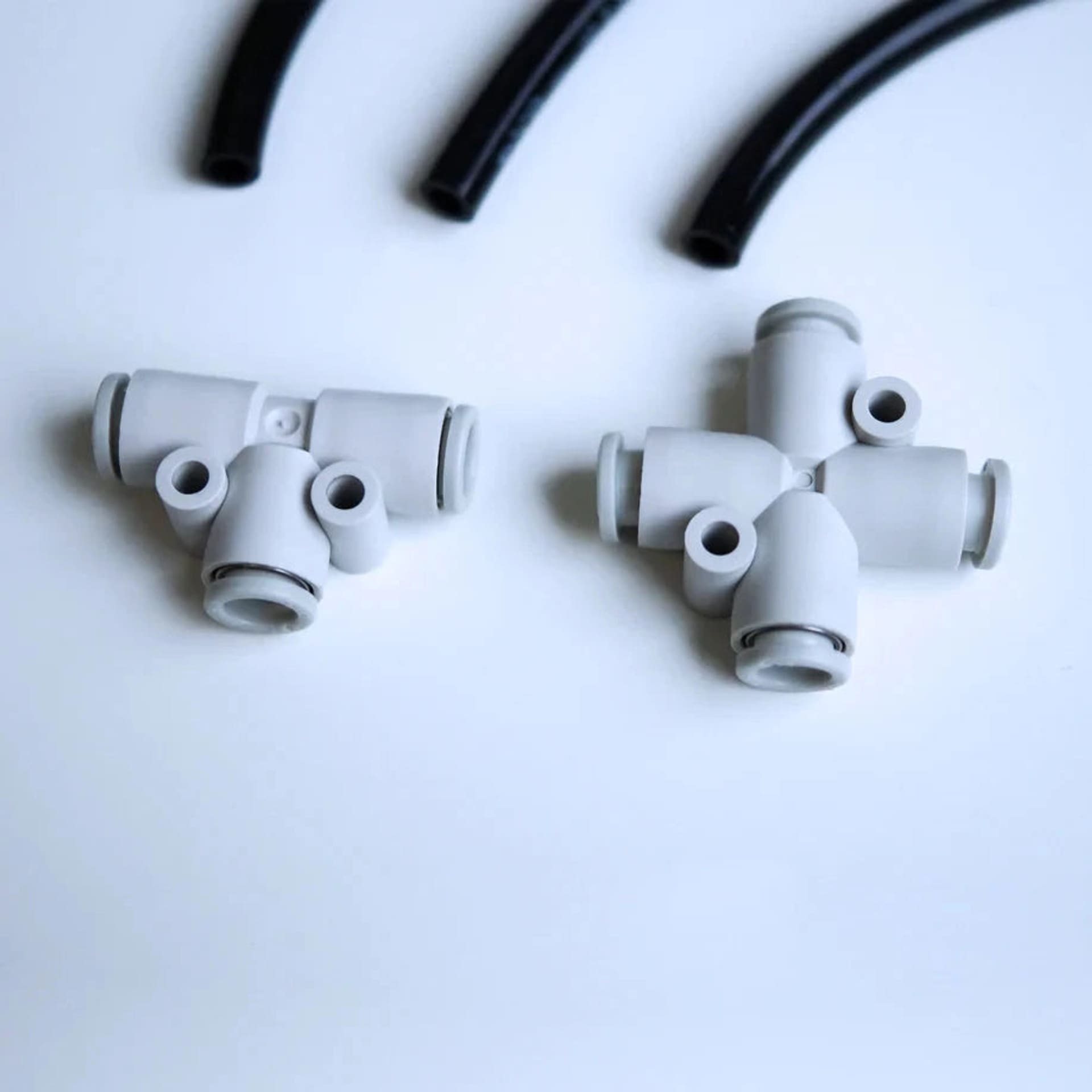Selecting the right material for microfluidic applications requires careful consideration of chemical compatibility to ensure system reliability. PU (Polyurethane) is widely used in various microfluidic applications due to its versatility and resilience.
However, like all materials, PU has limitations and is not compatible with some chemicals. This guide provides a chemical compatibility table for Polyurethane, based on data (at 21°C) from PSI Urethanes, to help users evaluate its suitability for specific needs.
Refer to this table to make informed choices and maintain the efficiency and safety of your system.
💡 The chemical compatibility rating key is as follows:
- A = Excellent chemical compatibility (little to no effect)
- B = Good chemical compatibility (minor to moderate effect)
- C = Fair (moderate effect: not recommended for continuous use)
- D = Severe effect (not recommended for use)
🚨 The compatibility ratings provided in these tables are for general guidance only and may not be complete or accurate. They do not address potential contamination or changes in fluid properties due to tubing interaction. We do not guarantee the suitability of any material for specific purposes or the impact of tubing on fluid quality. For critical applications, conduct specific tests or seek expert advice.
Polyurethane: Chemical Compatibility Table
| Chemical Substance | Compatibility |
|---|---|
| A | |
| Acetic Acid 20% | B |
| Acetone | D |
| Aluminum Chloride | A |
| Ammonia, Anhydrous | D |
| Ammonium Chloride | B |
| Ammonium Hudroxide | D |
| Ammonium Phosphate | B |
| Ammonium Sulfate | A |
| Animal Fats | A |
| ASTM Fuel A | A |
| ASTM Fuel B | B |
| ASTM Fuel C | D |
| ASTM Oil # 1 | A |
| ASTM Oil # 2 | B |
| ASTM Oil # 3 | A |
| ASTM Oil # 4 | D |
| B | |
| Barium Hydroxide | A |
| Benzene | D |
| Boric Acid | A |
| Broax | A |
| Butane | A |
| C | |
| Calcium Bisulfite | A |
| Calcium Chloride | A |
| Calcium Hydroxide | A |
| Calcium Hypochlorite | D |
| Carbon Dioxide | A |
| Carbon Monoxide | A |
| Carbon Tetrachloride | D |
| Castor OIl | A |
| Chlorine Gas | D |
| Chromic Acid 2% | B |
| Citric Acid | A |
| Copper Chloride | A |
| Copper Sulfate 10% | A |
| Cottonseed OIl | A |
| Cyclohexane | A |
| D | |
| Diethyl Ether | A |
| Dimethylmethane | B |
| Distilled Vinegar | B |
| E | |
| Ethyl Acetate | D |
| Ethyl Alcohol | D |
| Ethylene Glycol | B |
| F | |
| Formaldehyde | D |
| Formic Acid | D |
| Freon 11 | B |
| Freon 113 | A |
| Freon 114 | A |
| Freon 12 | A |
| Freon 22 | D |
| G | |
| Gasoline | B |
| Glue | A |
| Glycerin | A |
| Grease | A |
| H | |
| Hexane | B |
| Home Heating Oil | B |
| Hydraulic Oils | B |
| Hydrochloric Acid 20% | B |
| Hydrochloric Acid 37% | D |
| Hydrogen | A |
| Hydrogen Peroxide 30% | B |
| I | |
| Isooctane 158°F | B |
| Isooctane 70°F | A |
| Isopropyl Ether | B |
| K | |
| Kerosene | B |
| L | |
| Lime, Caustic | A |
| Linseed Oil | B |
| Lubricating Oils | B |
| Lye | B |
| M | |
| Magnesium Chloride | A |
| Magnesium Hudroxide | A |
| Mercury | A |
| Methyl Alcohol | D |
| Methyl Ethyl Ketone | D |
| Mineral Oil | A |
| Mineral Spririts | B |
| Muriatic Acid 20% | B |
| N | |
| Naphtha | B |
| Naphthalene | B |
| Nitric Acid 10% | D |
| Nitric Acid 2% | B |
| O | |
| Oleic Acid | A |
| Ozone | A |
| P | |
| Palmitic Acid | A |
| Perchloroethylene | D |
| Phenol | D |
| Phosphoric Acid 20 - 70% | B |
| Phosphoric Acid 85% | D |
| Potassium Hydroxide 10% | B |
| S | |
| Silver Nitrate | A |
| Sodium Hydroxide 20% | A |
| Sodium Hydroxide 45% | B |
| Sodium Hypochlorite 1% | B |
| Stearic Acid | A |
| Stoddards Solvent 110°F | B |
| Stoddards Solvent 140°F | D |
| Sulfuric Acid 10 - 50% | C |
| Sulfuric Acid 5 - 10% | A |
| T | |
| Tannic Acid | A |
| Tartaric Acid | A |
| Tetrahydofuran | D |
| Toluene | D |
| Trichloroethylene | D |
| Tricresyl Phosphate | B |
| Trisodium Phosphate | A |
| Tung Oil | B |
| Turpentine | D |
| X | |
| Xylene | D |


